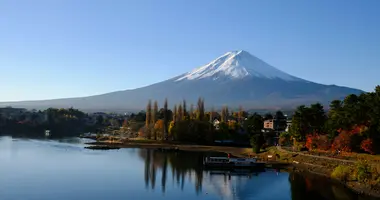Free tours in Japan 日本の観光無料スポット
Japan for not a penny
Traveling in Japan is quite expensive but whether it is religious sites, parks or unique places, it is possible to visit many places without spending a yen.

Meiji-jingu, famous shrine in Tokyo
aisiterucat
Shinto shrines
They are one of the important elements of a trip to Japan. From the smallest to the most grandiose, their entrance is always free. Among the most famous:
- In and around Tokyo:
- Meiji jingu with its huge park, in the heart of Tokyo and a stone's throw from the trendy Harajuku district.
- Nezu jinja , much less known, it is nevertheless a very pretty sanctuary and one of the oldest in Tokyo (1705) . Its garden is renowned for its azaleas.
- Tsurugaoka Hachiman-gu in Kamakura . From the top of its hill, it dominates the former political capital of Japan.
- In Kyoto:
- The unmissable Fushimi Inari Taisha and its path of torii (gates) fascinates visitors.
- Heian-jingu , built at the end of the 19th century to commemorate the advent of the Heian era (794-1185) which made Kyoto the imperial capital.
Buddhist temples
The most famous are often paying but there are hundreds of them whose entry is free and which are often much less frequented and no less interesting.
- In and around Tokyo:
- The Senso-ji temple , we don't present it anymore!
- The Zojo-ji temple . Located near Tokyo Tower . Built in 1393, it later became the family temple of Shogun Tokugawa Ieyasu. Its garden is populated with statues of Jizo, the bodhisattva protector of children.
See also: Visit Tokyo in the footsteps of the Tokugawa
- Gotoku-ji temple . Very small, it is invaded by statuettes of maneki neko .
- Myôhon-ji and Kômiyo-ji temples in Kamakura. Both are free, relatively unvisited and yet impressive and set in beautiful surroundings .
Parks and gardens
Who says Japan says gardens. Many and varied, you will always find some whose entry is free.
- In and around Tokyo:
- Ueno is certainly the most famous of the capital's parks . In addition to its gardens, you can also take advantage of the free visit to the Ueno Toshogu shrine , built in 1627 and restored in 1651, it withstood earthquakes and American bombardments during the Second World War.
To read: Ueno, park and popular district
- Yoyogi Park , very close to the Harajuku district . With a bit of luck, you might come across young Tokyoites in cosplay.
- Inokashira Park . A little out of the way, it gives the capital a little country air.
- Nogeyama Zoological Park in Yokohama . For the happiness of the little ones.
- In Kyoto:
- Maruyama Park is famous for its cherry blossoms. With 86,000 square meters of green space , it is the ideal place to rest or have a picnic.
- The Katsura Imperial Villa . A magnificent place consisting of a splendid garden and the buildings of the villa built in the 17th century for the emperor. Given its success, the site can only be visited by reservation (either by going directly to the counter, or by internet).
For beer and/or whiskey lovers
- The Suntory brewery in Kyoto (Nagaokakyo). Not only will you be able to learn all about the manufacturing process, but you will also have a free tasting .
- The Orion Beer Brewery in Nago, Okinawa . Be sure to check it out if you have the chance to go to Okinawa.
- The Nikka Whiskey Distillery in Yoichi, Hokkaido .
- The Yamazaki whiskey distillery in Osaka. Opened in 1923, it was the first Japanese whiskey production site.
See also: Japanese whiskey and Japanese beer
And even
- Musashigawa-beya in Tokyo : a unique opportunity to attend the training of young sumos . It is necessary to make the request (in Japanese) by internet ( http://musashigawa.com/ ).
- The Tsukiji fish market in Tokyo. Go after the auction instead, you can get in without queuing.
- The Instant Noodles Museum , Cupnoodles Factory in Osaka. The visit is free but you have to pay if you want to try to create your own recipe .
This list is of course not exhaustive and there are still loads of places and activities to see for free. Don't miss, for example, the fireworks ( hanabi) that light up the summer skies across the entire archipelago, as well as the matsuri (festivals) that punctuate the seasons and constitute a real spectacle.



















